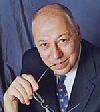 The late French neurologist, Dr. Paul Nogier, is best know for his innovative work in the development of auriculotherapy (ear acupuncture). Based on this research, Dr. Nogier’s findings and innovations have had profound implications for neuropathy and chronic pain patients, by helping to increase blood flow, reduce inflammation and assist in general healing. This light therapy product line is based on Nogier’s frequencies.
The late French neurologist, Dr. Paul Nogier, is best know for his innovative work in the development of auriculotherapy (ear acupuncture). Based on this research, Dr. Nogier’s findings and innovations have had profound implications for neuropathy and chronic pain patients, by helping to increase blood flow, reduce inflammation and assist in general healing. This light therapy product line is based on Nogier’s frequencies.
The following are the basics of Nogier’s work as described in the book Healing Energies of Heat and Light, by Charles McGee, M.D.
Dr. Nogier developed a unique pulse test. This test enabled him to determine that all tissues and organs throughout the body (which develop from three basic embryologic tissues; ectoderm, endoderm and mesoderm) are in resonance (sympathetic vibration) with specific frequencies. Dr. Nogier identified these frequencies as harmonics of the musical note D. This is to say that all the tissues of the body resonate to harmonics of D. Dr. Nogier found that these and other harmonics of D have healing effects.
Based on these findings, he designed electronic instruments that delivered seven pulsed energies into the body for the purpose of healing injured or diseased organs and tissues. These pulsed energies induced healing by exposing damaged tissues to their normal resonance frequency. The importance of Dr. Nogier’s finding that specific body tissues are in resonance with specific frequencies according to their embryologic origin cannot be overemphasized. According to Dr. McGee, it may (and certainly should) one day be recognized as one of the greatest discoveries of medicine.
According to Dr. Nogier, sickness results when cells, molecules or particles of matter are out of their normal resonance or vibratory pattern. By repeatedly exposing damaged tissue to the normal resonance frequencies associated with that tissue, healing often occurs, sometimes quite rapidly.
In McGee’s book, he discusses a hand-held light therapy device that consisted of light emitting diodes (LEDs) pulsed at Nogier’s frequencies. According to Dr. McGee, such a device appears to have far stronger healing effects than non-pulsed lasers set on low power outputs or non-pulsed LEDs regardless of their wavelengths (color).1.
1. (Frequency F, 73 Hz) For use when cellular activity is hypoactive, such as chronic recurring problems, nonunion fractures and chronic splints and for stimulation of osteoid. It is also helpful in activating humoral and endocrine functions. Field work has shown setting 1 helpful in stimulating (tonifying) acupuncture and trigger points and increasing circulation in areas being treated, such as wounds when past the acute stage.
2. (Frequency G, 147 Hz) For areas of yellow scar tissue that are generally formed internally on tendons, ligaments and sub-acute (lingering but not chronic) conditions. Field use has shown setting 2 to be helpful in reducing inflammation associated with injuries and infections. This is often called the universal frequency because most problems involve inflammation.
3. (Frequency A, 294 Hz.) For tissue of ectodermal origin, such as body openings, skin and nerve. Field applications include wounds, eye injuries and after surgery. Setting 3 tends to tone tissue while minimizing the chance of hemorrhaging fresh wounds or recent surgical sites. It is also good for the treatment of acupuncture and trigger points, corneal ulcers and ulcerated mucous membranes. This is called the universal frequency in acupuncture.
4. (Frequency B, 587 Hz.) This frequency appears to be most effective for neuropathy, but also for circulatory and lymphatic stimulation and treatment of tissue of endodermal origin, such as GI tract, liver and pancreas. In field applications, setting 4 has been used in conjunction with 5 and 2 for tendon, ligament, joint and other injuries where reaching secondary levels of tissue is needed.
5. (Frequency C, 1174 Hz.) For tissue of mesodermal origin, such as bone, joints, ligament, viscera and tendon. Field experience has shown setting 5 to be especially good for tendon and ligament injuries when used with 4 and 2. It also helps in relaxing large muscle groups.
6. (Frequency D, 2349 Hz.) For chronic conditions not responsive to setting 3 or 5. Field experience shows setting 6 to be a good supplement to 3 when healing processes appear to reach a plateau.
7. ((Frequency E, 4698 Hz.) For pain control, primarily when C nerve fibers are transmitting to dorsal root ganglia and when involvement of neurotransmitters is of physiological importance. Field experience shows 7 to help suppress pain and to sedate acupuncture and trigger points and aid in diminishing excess calcification associated with chips, spurs and arthritic conditions.
For circulatory and lymphatic stimulation and treatment of tissue of endodermal origin, such as GI tract, liver and pancreas. In field applications, setting 4 has been used in conjunction with 5 and 2 for tendon, ligament, joint and other injuries where reaching secondary levels of tissue is needed) )
